Filter interviews by
Oriental Structural Engineers Struct Kreation Consulting and Structural Engg Interview Questions, Process, and Tips
Oriental Structural Engineers Struct Kreation Consulting and Structural Engg Interview Experiences
1 interview found
Struct Kreation Consulting and Structural Engg Interview Questions & Answers
posted on 19 Nov 2017
I was interviewed before Nov 2016.
Interview Questionnaire
7 Questions
- Q1. Define design concrete?
- Ans.
Design concrete refers to the process of creating a specific mix of concrete to meet the structural requirements of a project.
Design concrete involves determining the appropriate proportions of cement, aggregates, water, and admixtures.
The mix design is based on factors such as strength, durability, workability, and environmental conditions.
Design concrete is tailored to meet the specific needs of a project, such as hi...
- Q2. Tell us about precast structure and where we use them?
- Ans.
Precast structures are pre-made concrete elements that are manufactured off-site and then assembled on-site.
Precast structures are made by pouring concrete into molds and allowing it to cure before being transported to the construction site.
They are commonly used in the construction of buildings, bridges, parking garages, and stadiums.
Precast structures offer advantages such as faster construction time, improved qualit...
- Q3. What is pile load test how we do it?
- Ans.
Pile load test is a method to determine the load-carrying capacity and behavior of deep foundations.
Pile load test involves applying a known load to a pile and measuring its response.
There are different types of pile load tests, such as static load test, dynamic load test, and statnamic load test.
Static load test is commonly performed by applying a gradually increasing load to the pile and measuring the settlement.
Dyna...
- Q4. What is the function of stantions wire in launching of segment?
- Ans.
Stantions wire is used in launching of segments to provide stability and support during the construction process.
Stantions wire acts as a temporary support system for the segments during launching.
It helps in maintaining the alignment and position of the segments during the construction process.
Stantions wire also helps in distributing the load evenly across the segments.
It provides stability and prevents any potential...
- Q5. Define BBS ?
- Ans.
BBS stands for Bar Bending Schedule.
BBS is a document that provides details of reinforcement steel bars required for a construction project.
It includes information like bar diameter, length, shape, and quantity.
BBS helps in estimating the amount of steel required and ensures proper reinforcement in the structure.
It is prepared based on structural drawings and specifications.
BBS aids in cost estimation, material procure...
- Q6. What is the function of voids in a slab or in a bridge segment?
- Ans.
Voids in a slab or bridge segment serve various functions such as reducing weight, accommodating utilities, and allowing for expansion and contraction.
Voids in slabs or bridge segments help reduce the overall weight of the structure.
They can accommodate utilities such as electrical wiring, plumbing, or HVAC systems.
Voids allow for expansion and contraction of the structure due to temperature changes.
They provide space ...
- Q7. Define workability?
- Ans.
Workability refers to the ease and ability of a material to be manipulated, shaped, and compacted without losing its desired properties.
Workability is a crucial factor in construction and engineering, especially in concrete and other building materials.
It is influenced by factors such as water content, aggregate size and shape, and the use of admixtures.
Good workability allows for easier placement, compaction, and fini...
Interview Preparation Tips
Experience: Resume and document submitting
Tips: After it call for interview
Round: HR Interview
Experience: I was passed Hr interview and Send for next level.
Tips: Good skill and knowledge of work.
Good study.
Round: Salery decide
Experience: I was selected.
Tips: I asked company salery grade pay.
And ready for doing work in company.
Skills: KnowledgeHut
Top trending discussions






Interview questions from similar companies
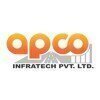
Senior Structural Engineer Interview Questions & Answers
Apco Infratechposted on 18 May 2024
I applied via Naukri.com and was interviewed in Apr 2024. There was 1 interview round.
(5 Questions)
- Q1. What is favourable zone in RCC
- Ans.
Favourable zone in RCC refers to the region of a reinforced concrete member where the concrete is in compression and the steel is in tension.
Favourable zone is the area where the concrete is able to resist compressive forces effectively.
It is typically located at the top of a beam or slab, where the bending moment is highest.
In this zone, the steel reinforcement helps to resist tensile forces, while the concrete resist...
- Q2. What is lap length
- Ans.
Lap length is the length of overlap between two reinforcing bars in a concrete structure to ensure proper transfer of loads.
Lap length is important for ensuring the continuity of reinforcement in concrete structures.
It is typically specified in building codes and design standards.
The lap length required depends on factors such as the diameter of the bars, concrete strength, and design loads.
For example, in a beam, the ...
- Q3. Type of lapping in reinforcement
- Ans.
Lapping in reinforcement involves overlapping two reinforcement bars to ensure continuity and strength in the structure.
Lapping is commonly used in construction to connect two reinforcement bars together.
The length of the lap varies depending on the design requirements and the type of reinforcement used.
Proper lapping ensures that the load is transferred effectively between the bars.
Examples of lapping include lap spli
- Q4. Role of bearing in bridges
- Ans.
Bearings in bridges help distribute loads and allow for movement due to temperature changes and settlement.
Bearings help distribute the loads from the superstructure to the substructure of the bridge.
They allow for movement of the bridge deck due to temperature changes, wind forces, and settlement of the foundation.
Bearings help reduce stress on the bridge components and prevent damage.
Common types of bearings used in ...
- Q5. Types of expansion joint
- Ans.
Types of expansion joints include slip joints, bellows joints, and modular joints.
Slip joints allow for movement in one direction only
Bellows joints accommodate movement in multiple directions
Modular joints are made up of separate components that can be replaced individually

Senior Structural Engineer Interview Questions & Answers
Dineshchandra R. Agrawal Infraconposted on 15 Feb 2025
(1 Question)
- Q1. What are the lessons learned from the HR policy?

I applied via Referral and was interviewed in Dec 2023. There was 1 interview round.
(6 Questions)
- Q1. About your self
- Q2. What is the difference between Fixed and Pinned connection in base plate?
- Ans.
Fixed connection does not allow rotation at the base plate, while pinned connection allows rotation.
Fixed connection is rigid and does not allow rotation at the base plate.
Pinned connection allows rotation at the base plate.
Fixed connection provides more stability and resistance to lateral forces.
Pinned connection is more flexible and allows for some movement.
Examples: Fixed connection is commonly used in high-rise bui...
- Q3. What is the rise and trade in stair?
- Ans.
The rise is the vertical distance between two consecutive steps, while the tread is the horizontal distance.
The rise is typically around 7-8 inches, while the tread is usually around 10-11 inches.
The rise and tread dimensions are important for ensuring safe and comfortable stair design.
Building codes often dictate the minimum and maximum rise and tread dimensions for safety reasons.
- Q4. What is the pitch distance in bolt?
- Ans.
Pitch distance in bolt refers to the distance between the centers of adjacent bolts in a bolted connection.
Pitch distance is typically measured from the center of one bolt to the center of the next bolt in a row.
It is important to maintain consistent pitch distances to ensure proper load distribution and structural integrity.
For example, in a bolted connection with a pitch distance of 2 inches, the centers of adjacent
- Q5. Make pipe rack section on both direction
- Ans.
To create a pipe rack section on both directions.
Identify the location and dimensions for the pipe rack section
Consider the load requirements and support structures
Design the pipe rack section using appropriate materials and connections
Ensure proper spacing and alignment for pipes in both directions
- Q6. Make equipment foundation, Pump Foundation

(1 Question)
- Q1. Do you have experience with basements and below ground structures
- Ans.
Yes, I have extensive experience with basements and below ground structures.
I have designed and analyzed numerous basements for residential and commercial buildings.
I am familiar with waterproofing techniques and soil mechanics related to below ground structures.
I have experience with retaining walls, foundations, and underground parking structures.
I have worked on projects involving deep excavations and shoring system...

I applied via LinkedIn and was interviewed in Oct 2023. There was 1 interview round.
(2 Questions)
- Q1. Sfd and bmd questions
- Q2. Calculation of earthquake loads
- Ans.
Earthquake loads are calculated using seismic design codes and formulas based on the seismic hazard of the region.
Determine the seismic hazard of the region using historical data and seismic maps
Select a seismic design code such as ASCE 7 or Eurocode 8
Calculate the seismic base shear using the formula V = CsW
Distribute the seismic base shear to the structure using the appropriate load combinations
Consider the effects o...

I applied via Company Website and was interviewed in Sep 2023. There was 1 interview round.
(1 Question)
- Q1. Bending moment & Shear force diagram, lateral pressure from soil & water, reinforcement provision, Tension & compression in retaining walls etc.
Interview Preparation Tips

I applied via campus placement at National Institute of Technology (NIT), Warangal and was interviewed before May 2023. There were 3 interview rounds.
Aptitude+ Technical MCQ test
(5 Questions)
- Q1. BMD and SFD diagram of continuous beam and portal frames.
- Ans.
BMD and SFD diagrams show internal forces in a structure, like bending moment and shear force.
BMD diagram displays variation of bending moment along the length of a beam or frame.
SFD diagram shows variation of shear force along the length of a beam or frame.
In continuous beams, BMD and SFD diagrams help in analyzing internal forces at different supports and sections.
Portal frames have different loading conditions which...
- Q2. Basics of geotechnical engineering
- Q3. Basics of Steel Structure
- Q4. Plastic method of design
- Ans.
Plastic method of design is a structural engineering approach that considers the redistribution of internal forces to achieve a more efficient design.
Plastic method allows for redistribution of internal forces beyond the elastic limit of the material.
It is based on the concept of plastic hinges forming in the structure to dissipate energy.
Design is based on achieving a collapse mechanism that is ductile and predictable...
- Q5. Basics of IS456 RCC
(2 Questions)
- Q1. Tell me about About yourself
- Q2. About Salary details
Interview Preparation Tips

I applied via Referral

(1 Question)
- Q1. About your project and experience.
Interview Preparation Tips
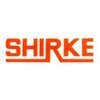
Structural Design Engineer Interview Questions & Answers
B. G. Shirke Construction Technologyposted on 6 Aug 2022
I applied via Naukri.com and was interviewed in Feb 2022. There were 3 interview rounds.

(1 Question)
- Q1. SFD BMD and technical questions on IS codes
(1 Question)
- Q1. Previous experience and job profile discussion
Interview Preparation Tips
Oriental Structural Engineers Interview FAQs
Some of the top questions asked at the Oriental Structural Engineers Struct Kreation Consulting and Structural Engg interview -
Tell us how to improve this page.
Oriental Structural Engineers Interviews By Designations
- Oriental Structural Engineers Assistant Engineer Interview Questions
- Oriental Structural Engineers Construction Store Keeper Interview Questions
- Oriental Structural Engineers IT Engineer Interview Questions
- Oriental Structural Engineers Quality Engineer Interview Questions
- Oriental Structural Engineers Site Incharge Interview Questions
- Oriental Structural Engineers Store Executive Interview Questions
- Oriental Structural Engineers Struct Kreation Consulting and Structural Engg Interview Questions
Interview Questions for Popular Designations
- Structural Engineer Interview Questions
- Structural Design Engineer Interview Questions
- Civil Structural Engineer Interview Questions
- Senior Structural Engineer Interview Questions
- Junior Structural Engineer Interview Questions
- Senior Structural Design Engineer Interview Questions
- Civil Structural Designer Interview Questions
- Structure Site Engineer Interview Questions
- Show more
Interview Questions from Similar Companies
|
Senior Engineer
39
salaries
| ₹3.4 L/yr - ₹7.4 L/yr |
|
Assistant Engineer
32
salaries
| ₹2.2 L/yr - ₹5 L/yr |
|
Junior Engineer Civil
22
salaries
| ₹1.8 L/yr - ₹3.3 L/yr |
|
Senior Project Engineer
19
salaries
| ₹8.4 L/yr - ₹13.9 L/yr |
|
Project Engineer
18
salaries
| ₹4.8 L/yr - ₹10.3 L/yr |

Tata Projects
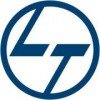
Larsen & Toubro Limited
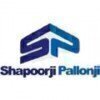
Shapoorji Pallonji Group
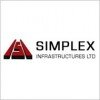
Simplex Infrastructures
- Home >
- Interviews >
- Oriental Structural Engineers Interview Questions >
- Oriental Structural Engineers Struct Kreation Consulting and Structural Engg Interview Questions











